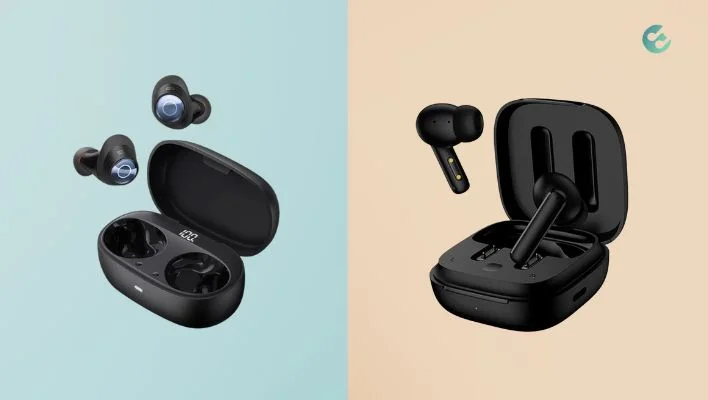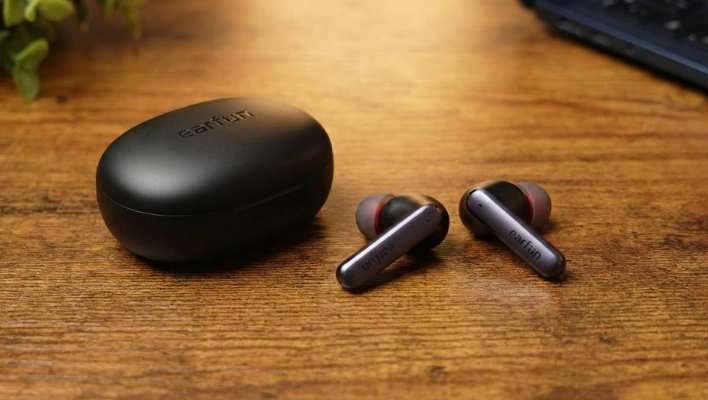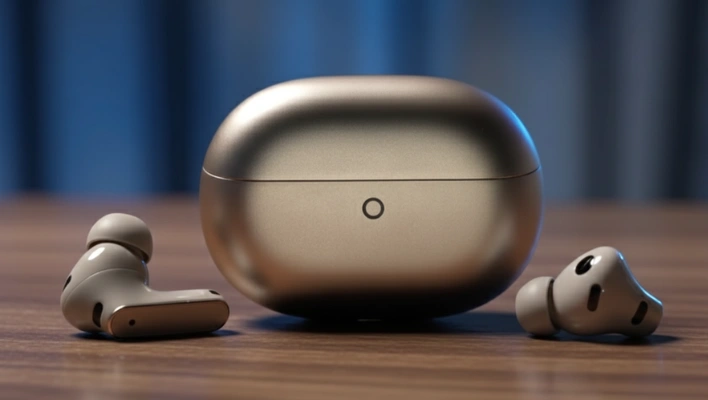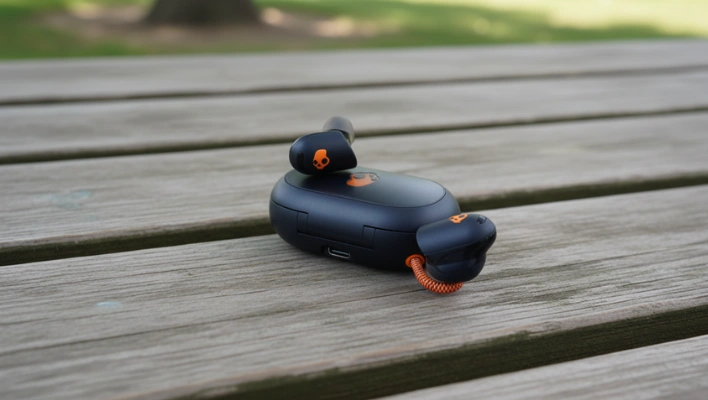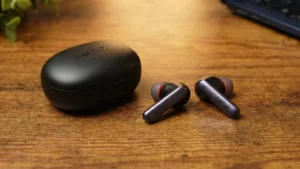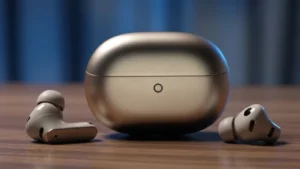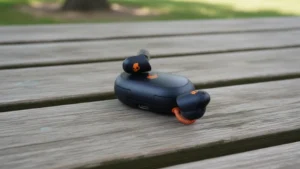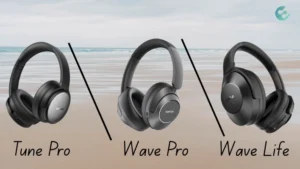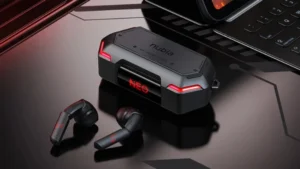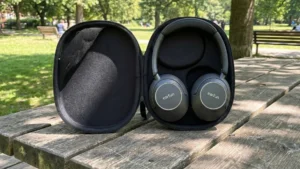Today, we’re gonna compare two super popular affordable earbuds models – the Baseus Bowie MA10 Pro and the QCY T13 – to help you figure out which one is gonna be the perfect fit for you, without breaking the bank.
So, both come with active noise cancellation (ANC) and some other cool modern features.
But, here’s the deal – even though they have some similarities, there are some key differences in how they perform, how comfortable they are, and of course, the price. And these differences might just be the deciding factor for you.
So, let’s take a deep dive into all the juicy details, shall we?
Here are the quick specs differences between the Baseus Bowie MA10 Pro vs QCY T13:
| Feature | Baseus Bowie MA10 Pro | QCY T13 |
|---|---|---|
| Bluetooth Version | 5.3 | 5.3 |
| Battery Life (ANC off) | ~8 hours | ~7 hours |
| Active Noise Cancellation | 48 dB | 28 dB |
| Companion App | Baseus app | QCY app |
| Wireless Case Charging | Yes | No |
| Case Battery Display | Yes | No |
| Sound Quality | Superior, excellent bass | Good, improved bass |
| Comfort | Very comfortable | Comfortable |
| Approximate Price | $40 | $30 |
| Best Deal | Check on AliExpress | Check on AliExpress |
Baseus Bowie MA10 Pro vs QCY T13: In-depth Review
Design and Build Quality
Baseus Bowie MA10 Pro:
- Sleek and modern design
- Premium feel with high-quality materials
- Compact charging case with LED battery display
- Earbuds feature a stem design for easy handling
- Available in multiple color options
- IPX6 water resistance rating for protection against sweat and light rain
QCY T13:
- Compact and lightweight design
- Decent build quality with durable plastic construction
- Small charging case that’s easy to carry
- In-ear design without stems
- Limited color options (typically black)
- IPX5 water resistance rating, suitable for workouts
Both earbuds offer good build quality for their respective price points. The Baseus Bowie MA10 Pro has a slight edge in terms of premium feel and additional features like the LED display on the case. The QCY T13, while more basic in design, still offers durability and practicality at a lower price point.

While both earbuds were found to be comfortable, the Baseus Bowie MA10 Pro had a slight edge in overall comfort during extended wear. This is an important factor if you plan to use your earbuds for long listening sessions.
The choice between stem and non-stem designs is largely a matter of personal preference. Some users find stem designs easier to handle, while others prefer the more discreet look of stemless earbuds.
Connectivity
Both earbuds feature Bluetooth 5.3, ensuring a stable and fast connection to your devices. In testing, both models connected quickly to smartphones and maintained a solid connection.

The QCY T13 is compatible with the QCY app, while the Baseus Bowie MA10 Pro works with the Baseus app. These companion apps allow for customization of settings and sound profiles.
Battery Life
Battery life is crucial for wireless earbuds. Here’s how they stack up:
- QCY T13: Approximately 7 hours of continuous playback with ANC off (varies with volume)
- Baseus Bowie MA10 Pro: Approximately 8 hours of continuous playback with ANC off (varies with volume)
The Baseus model has a slight edge in battery life. It also features a display on the charging case that shows the remaining battery percentage. Another advantage of the Baseus earbuds is their support for wireless charging of the case, a feature the QCY T13 lacks.
Active Noise Cancellation (ANC)
One of the standout features of both models is their ANC capability:
- Baseus Bowie MA10 Pro: 48 dB noise reduction
- QCY T13: 28 dB noise reduction
In practical testing, the Baseus model demonstrated noticeably superior noise cancellation. If you frequently use your earbuds in noisy environments, this could be a deciding factor.
Sound Quality
While both earbuds offer good sound quality, there are some differences:
The QCY T13 provides good overall sound with impressive bass response. It’s an improvement over its predecessor, the QCY T13 (non-ANC version).

However, the Baseus Bowie MA10 Pro stands out with superior sound quality. It offers excellent bass response and overall audio performance.
Both models allow you to customize sound profiles through their respective apps, giving you the ability to fine-tune the audio to your preferences.
Microphone Quality
In terms of microphone quality, the Baseus Bowie MA10 Pro offers clearer audio in recordings and calls compared to the QCY T13.
This makes it a better choice if you prioritize communication clarity during phone calls or video chats.
Gaming Performance
For gamers, latency (delay) is crucial. Both models perform well, but in our testing, the Baseus Bowie MA10 Pro slightly outperforms the QCY T13 in this aspect.
If you’re a gamer, this might influence your decision.
Price
At the time of writing this article:
- QCY T13: Approximately $30
- Baseus Bowie MA10 Pro: $40
The Baseus model is about twice the price of the QCY earbuds. Whether the premium is worth it depends on how much you value the additional features and performance improvements.
Best Deal:
MA10 Pro: View on AliExpress
QCY T13: View on AliExpress
Baseus Bowie MA10 Pro vs QCY T13: Which Should You Choose?
If budget is your primary concern and you’re looking for a solid pair of ANC earbuds, the QCY T13 offers good value. They provide decent sound quality, ANC, and battery life at a more affordable price point.
However, if you’re willing to spend more for premium features, the Baseus Bowie MA10 Pro is the superior choice. It offers better sound quality, more effective noise cancellation, slightly longer battery life, and extra features like wireless case charging and a battery display.
So I highly recommend the Baseus Bowie MA10 Pro for those who can afford the higher price tag, citing its overall better performance and feature set.
Related:
- Baseus Bowie MA10 Pro vs QCY HT05
- Baseus Bowie MA10 Pro vs QCY HT07
- Baseus Bowie 30 vs Bowie MA10 Pro
- Baseus Bowie MA10 Pro vs Redmi Buds 5
- Realme Buds Air 5 vs Baseus Bowie MA10 Pro
Nick, the Co-founder of Earbuds Arena, is a seasoned freelance tech journalist with over ten years of experience covering wearables, apps, headphones, and gadgets. When he’s not immersed in the tech world, you’ll likely find him unwinding with video games, going for a run, or enjoying a game of soccer on the field.
